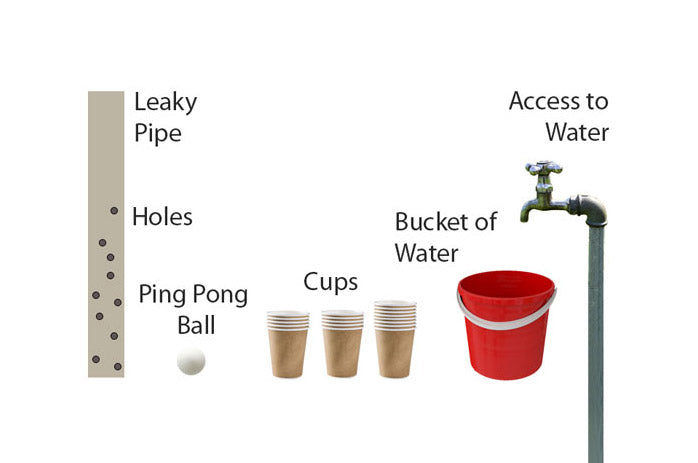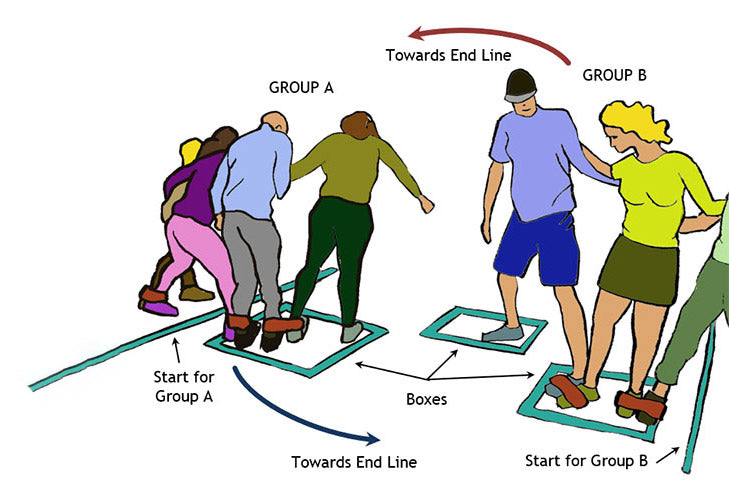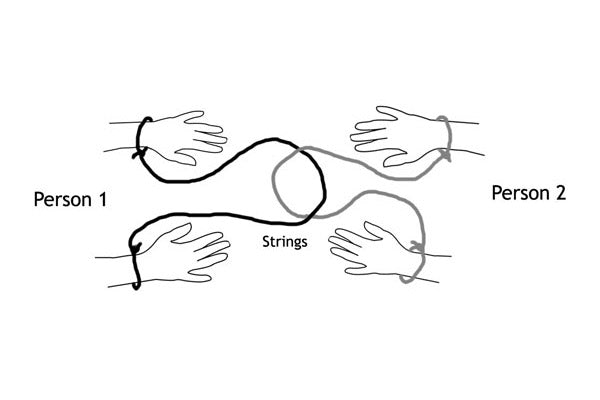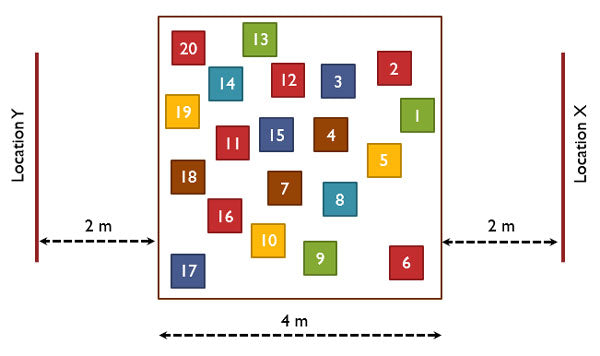Purpose
This team building exercise presents groups with challenges which require solutions to seemingly easy problems. Delegates need to plan, construct and execute their solutions quickly in order to beat other teams. The aim is to make a balloon go slowly upwards, the slower the better. The team with the slowest balloon wins.
Objective
Slow down the upward movement of a helium-filled balloon so that your balloon reaches the ceiling after all other balloons.
What You Need
- One balloon for each group. Aim for group sizes of 3. You need to make sure that all balloons have an identical size and all filled with identical amount of helium.
- High ceiling. The higher the ceiling the longer it takes for the balloons to reach it and it will be easier to measure the differences between them. However, you need to be able to get the balloons back. You also need to make sure the place is safe for the purpose of this exercise.
- A random set of materials that can be used to attach weights to a balloon and slow its upward movement. Examples are:
- Thread
- Scissors
- Screws and Nuts
- Tape
- Paper
- Needles
- Paper clips
- Prizes for the winning group
Setup
- Divide the delegates to groups of three.
- Optionally, demonstrate that all balloons are identical and have identical lift by letting them go in sync and expect them to reach the ceiling at the same time.
- Retrieve the balloons.
- Provide one helium-filled balloon to each group. Ask them to secure it to a chair or table so it doesn’t escape.
- Provide resources. You can choose between two variations for this exercise:
- Shared resources. You can place all the materials on a central table. All groups need to go back to this central resource centre to collect and choose items as they wish. This introduces competition for resources between groups. It also forced them to compromise on available content, perhaps even barter with other groups for certain key resources. Some groups may use a predatory strategy to hug resources or take a lot of resources they don’t need. These can all be part of the team building exercise depending on what you want to teach in terms of teamwork, management, resource management, competition, fairness and problem solving under pressure.
- Identical resources. Alternatively, you can provide an identical set of resources to each group to make the exercise as fair as possible. This way groups compete against each other to be the fastest and most efficient in producing a solution for a problem. The exercise can be used to train them on resource management, self-organisation, leadership, teamwork, cooperation, goal-oriented thinking, rapid problem solving and crisis management.
- Once you have provided the resources, allocate 15 minutes for the groups to design and test their balloons. Groups cannot fully test their balloons by letting them go, so they need to run short tests. If any group loses their balloon, they go automatically out of the competition.
- On your mark, start the competition.
- After 15 minutes bring back everyone together and set the balloons for the final race.
- Let the balloons go off ceremonially all at once and observe to see which balloon is the last to reach the ceiling. Expect a lot of shouting and encouragements from the groups to their respective inanimate balloons!
- The group with the slowest balloon wins.
- Provide the prize and follow with a discussion.
Timing
Explaining the Exercise: 5 minutes
Activity: 15 minutes
Group Feedback: 10 minutes
Discussion
What did you think of your solution? How did it compare to other groups? Was there any particular solution that you liked the most? Whose team produced the simplest solution? What did you think of your team work? Did you assign a leader before engaging in the activity? Did everyone know what they needed to do? Were team members cooperative? Was there group cohesion? If you have to change anything in the group, what would that be? Were you happy with the leadership of your group? Did you negotiate with other groups for resources? Was work shared between group members to quickly provide a solution?
Soft Skills Training Materials
Get downloadable training materials
Online Train the Trainer Course:
Core Skills
Learn How to Become the Best Trainer in Your Field
All Tags
Training Resources for You

Course Design Strategy
Available as paperback and ebook

Free Training Resources
Download a free comprehensive training package including training guidelines, soft skills training activities, assessment forms and useful training resources that you can use to enhance your courses.

Our Comprehensive Guide to Body Language

Train the Trainer Resources
Get Insights - Read Guides and Books - Attend Courses
Training Materials
Get downloadable training materials on: Management Training, Personal Development, Interpersonal Development, Human Resources, and Sales & Marketing














Leave a comment
All comments are moderated before being published.
This site is protected by hCaptcha and the hCaptcha Privacy Policy and Terms of Service apply.